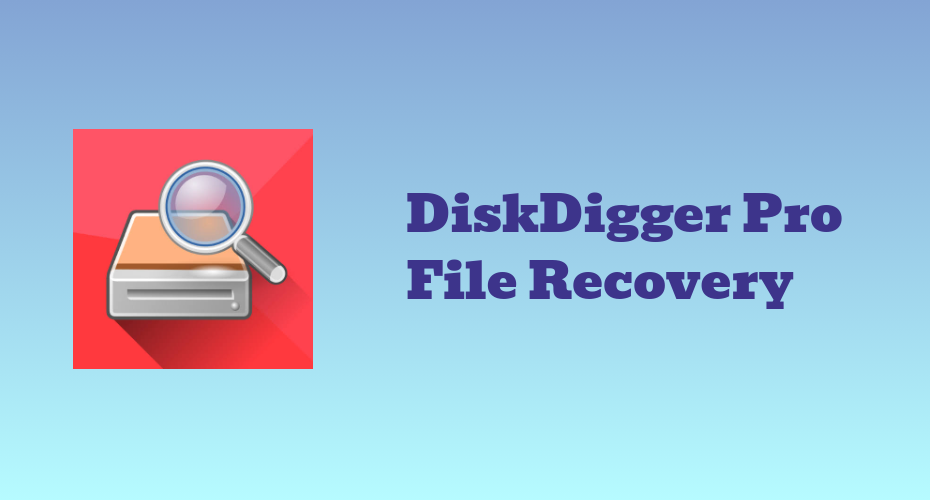DiskDigger is a powerful tool for recovering lost files from storage devices. Whether you accidentally deleted important photos, documents, or other files, DiskDigger can help you retrieve them. This guide will explain what DiskDigger is, how it works, and how you can use it to recover your lost data.
Mods
- Paid Untouched APK
- Undelete and recover your lost or deleted files with DiskDigger!
What is DiskDigger?
DiskDigger is a data recovery tool that helps you find and restore deleted files from your device’s storage. It works on various storage media, including hard drives, memory cards, USB flash drives, and your phone’s internal memory. DiskDigger is known for its efficiency and ease of use, making it a popular choice for technical and non-technical users.
How Does DiskDigger Work?
When you delete a file, it doesn’t completely disappear from your storage device. Instead, the space it occupies is marked as available for new data. Until new data overwrites it, the deleted file can still be recovered. DiskDigger scans your device’s storage for these deleted files and allows you to retrieve them.
Key Features of DiskDigger
1. File Recovery from Various Storage Devices DiskDigger can recover files from various storage devices. Whether you need to retrieve data from a hard drive, memory card, USB flash drive, or your smartphone’s internal memory, DiskDigger can handle it.
2. Support for Multiple File Types DiskDigger supports the recovery of various file types, including photos, videos, documents, and more. This makes it a versatile tool for recovering different kinds of data.
3. Deep Scan and Basic Scan DiskDigger offers two types of scans: basic and profound. The basic scan is quick and suitable for recovering recently deleted files. The deep scan, however, is more thorough and can find files deleted a long time ago or after a device has been formatted.
4. Preview Before Recovery One of DiskDigger’s valuable features is the ability to preview files before recovery. This allows you to see what you’re recovering and ensures that you’re restoring the correct files.
5. Easy-to-Use Interface DiskDigger is designed with a user-friendly interface, making it easy for anyone to use. You don’t need to be a tech expert to navigate the app and recover your lost files.
Step-by-Step Guide to Using DiskDigger
1. Download and Install DiskDigger The first step is to download and install DiskDigger on your device. The application can be found on the official DiskDigger website or through various mobile app stores.
2. Select the Storage Device. Once installed, open DiskDigger and select the storage device from which you want to recover files. This could be your computer’s hard drive, a USB flash drive, or your phone’s internal storage.
3. Choose the Type of Scan. Decide whether you want to perform a basic scan or a deep scan. A basic scan should suffice for recently deleted files. If you’re looking for files deleted long ago or after formatting the device, choose the deep scan option.
4. Start the Scan: Click the start button to begin the scan. DiskDigger will analyze the selected storage device and look for recoverable files. The scanning process may take time, mainly if you perform a deep scan on a large storage device.
5. Preview and Select Files to Recover Once the scan is complete, DiskDigger will display a list of recoverable files. You can preview these files to ensure they’re the ones you want to recover. Select the files you wish to restore.
6. Recover the Files: Click on the recover button to restore the selected files. Please choose a location to save the recovered files, ensuring it’s different from the original location to avoid overwriting other data.
Tips for Successful Data Recovery with DiskDigger
1. Act Quickly The sooner you use DiskDigger after deleting files, the higher the chances of successful recovery. The longer you wait, the more likely new data will overwrite the deleted files.
2. Avoid Using the Affected Storage Device Minimize using the storage device from which you want to recover data. This reduces the risk of overwriting the deleted files and increases the chances of successful recovery.
3. Regular Backups: Regularly back up your important files to avoid losing them in the first place. While DiskDigger is an excellent recovery tool, it’s always best to have a data backup.
4. Use Deep Scan for Thorough Recovery. Use the deep scan option if the basic scan doesn’t find the files you’re looking for. It’s more thorough and can recover files that the basic scan might miss.
Conclusion
DiskDigger is a reliable and efficient tool for recovering lost files from various storage devices. Its user-friendly interface and powerful scanning capabilities make it a go-to solution for data recovery. Whether you’ve accidentally deleted important files or lost data due to a device malfunction, DiskDigger can help you retrieve your valuable data. Remember to act quickly and avoid using the affected storage device to increase your chances of successful recovery. And, of course, make regular backups of your important files to prevent future data loss. With DiskDigger, you have a dependable ally in recovering your lost data.
FAQs
1. Is DiskDigger free to use?
- DiskDigger offers both free and paid versions. The free version provides basic recovery features, while the paid version includes advanced features and deep scan capabilities.
2. Can DiskDigger recover files from a formatted device?
- DiskDigger can recover files from a formatted device using the deep scan option.
3. Is DiskDigger safe to use?
- DiskDigger is safe and doesn’t harm your device or data during recovery.
4. Does DiskDigger work on all devices?
- DiskDigger works on various devices, including Windows, Mac, Android, and iOS.
5. How long does the recovery process take?
- The recovery process duration depends on the size of the storage device and the type of scan you’re performing. A deep scan takes longer than a basic scan.



Pingback: WiFi Connection Manager APK: Network Control Tool - Techmods